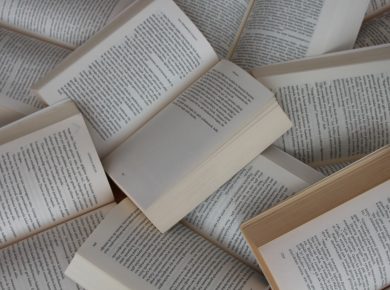Part one:
When we view a group of growing chimpanzees or other groups of growing animals, such as elephants – we find there: support, love and mutual care. The love and care between them is called: interspecies friendship, it is a non-sexual bond that is formed between animals of different species.[1] In many cases of interspecies friendship, the pair of animals include those not known to get along, and sometimes, one is of a species that ordinarily preys upon the other in nature.[2]
Here are some examples:

- A timber wolf and two goats were kept in enclosures next to each other in the San Diego Zoo and engaged in a playful relationship which involved racing each other back and forth by the fence separating them.[18] They would also rest next to each other by the fence and the wolf would try to lick the goats’ faces. They would be let outside the same time each day so that they could play together and the wolf would only go inside at night if the goats were already inside.[18]
- A miniature horse and farm goose were rescued together and formed an interspecies friendship in Bucks County, Pennsylvania. The horse was recovering from infection, which made the farm goose more protective of him. The goose would show protective behavior when staff would treat the horse.[20]
- A horse and wild turkey displayed friendly behaviour in which the horse would bow down his head and allow the turkey to climb on his back.[18]
- A ram and a blind cow exhibited interspecies friendship in which the ram would protect the cow by making sure she did not bump into anything and feeding beside her every day.[19] When the cow gave birth to a calf, the ram exhibited these protective behaviours on the calf as well.[19]
- ● A steer and a blind mule formed an interspecies friendship in the Black Forest Animal Sanctuary.[4] When the species were introduced, the steer automatically assumed a protective role over the blind mule by staying near her, sleeping next to her, playing with her and leading her around the pasture to protect her from injuries.[4]
(Wikipedia).
We would definitely not find among animals – emotions such bulling, cruelty, humiliation, discrimination, using advantage over others, boycotting, aggression, exploitation, hostilely, anger, contempt, disgust, shaming, jealousy, and envy. etc.
But where we do find it, and quite frequently, is among young growing human beings.
Children and adolescents grow up in the same age company of other kids, and the more sensitive and unique is the child – the more punishing and cruel would be his share.
The tough and the rough emerge out almost unharmed, but the delicate, the gentle and especially the highly sensitive – suffer much.
In the book: Lord of the Flies by Nobel Prize-winning British author William Golding.- a group of British boys stranded on an uninhabited island. All their wild aggressive real attitude to each other – is revealed, once the thin mask of the civilized cultural citizen is removed.
This is not discussed much (except when it deteriorates into violence), but children could be quite cruel to their companions in the class at school. Now, if there is such a difference between life in a young animal in a herd and in human young – groups, the question which arises is: how come there is such a huge difference between us and them?
Why must the atmosphere in a class of children must be so poisonous socially and interpersonally? Compare with what was described here earlier about the love and care between animals.
Well the direction could sound strange for it is completely in the unknown. And is to do with having partial consciousness… Partial consciousness in an analogy, it is like an airplane having an engine of a car. Animals do not have even this partial consciousness (except some instinctive and emotional reactions).
One more example is two people, one is thin the other has some muscles, if both will not do exorcise – the thin will remain thin, but the muscles of the other will turn to fat, The meaning of the analogy is: that the thin person has got no consciousness at all, the one with some muscles – has got some consciousness, if both will not work on themselves – the one with muscles will degenerate (become more fat), whilst the thin one will remain fatless (not degenerate at all).
I know, it sounds paradoxical, for how come having some consciousness (humans), could be worse than almost not having it at all (animals)?
Part two:
First of all, partial consciousness (also in grownups) isn’t static, if a person is not on the path of growing his partial consciousness to be like the engine of an airplane – then the only other direction left for him is to degenerate. Degeneration of humanity could find expression in symptoms such as: meaninglessness, corruption, loneliness, human relations: (power struggles, alienation, lack of listening, conflicts, lack of human warmth and empathy, etc.). We only degenerate because we have partial consciousness, and in order to degenerate we need just to believe that all is well, whereas to develop this partial consciousness, to be less partial and more full and wholesome – is hard and deliberate work.
It is important to understand that partial consciousness, if left un utendered, then the direction is only downhill. To go uphill, a conscious decision must be taken.
The main issue here is that it is better to be born with no consciousness, then with a partial one, because the partial one has in it a greater chance to sink into an abyss, a bottomless hole, then if there was no consciousness at all.
This reminds a saying of Gurdjieff in this matter:
“Blessed is he who hath a soul,
Blessed is he who hath none,
Woe and sorrow to him who hath it in conception”.
The unfixed (partial) consciousness, can either speed our misuse of our partial consciousness on its way down, or we can use an emerging option, and it is: to tame and train the partial consciousness and train it to become this great tree of life it could become.
In fact, having an unfixed, or partial, consciousness, is a highly unstable and dangerous state to be in. Looking at human history, it is not lovely, to say the least, but we look at it completely the opposite; we are sure we are getting better, and that our state is better than before, but it is only an imagined technical and scientific dress, underneath the king is naked.
Part three:
The problem grows and becomes bigger, in our conviction, that the partial consciousness is actually a fully developed one.
So we will not develop our consciousness, being sure that it is already in full function.
But as it is hard to imagine most humanity developing their partial consciousness – this road or path, is still for the few who love truth more than the temptation to surrender to our state of partial consciousness.
In conclusion: if you have a potential, and you don’t use it – it will turn against you.
*
Gabriel Raam
26.8.20

